Cycladic Art
Nineteenth-century archaeologists were looking for evidence of the people and places mentioned in Homer’s epic poems. Instead, they found the Bronze-Age art of the Cycladic islands, and the Minoan and Mycenaean civilizations.
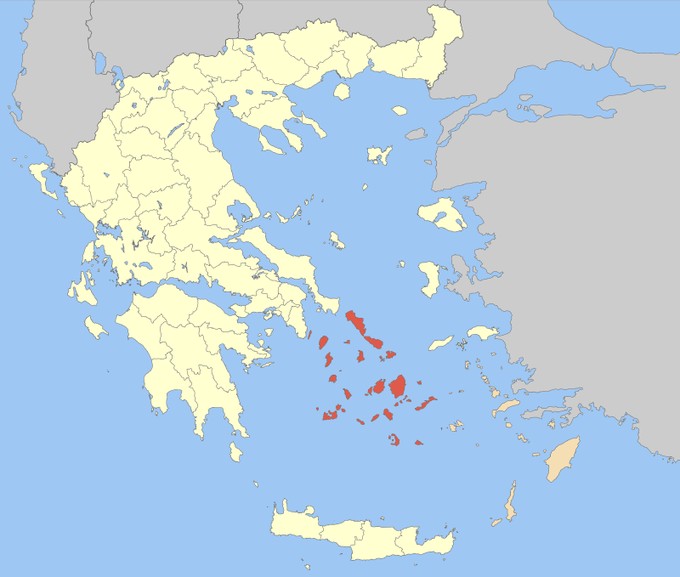
Cycladic art during the Greek Bronze Age is noted for its abstract, geometric designs of male and female figures. The Cyclades were known for their white marble, mined during the Greek Bronze Age and throughout Classical history. Their geographical location placed them, like the island of Crete, in the center of trade between Greece, Egypt, Asia Minor, and the Near East. The indigenous civilization on the Cyclades reached its high point during the Bronze Age. The islands were later occupied by the Minoans, Mycenaeans, and later the Greeks.
By the end of this module you will be able to:
- Identify and describe the form, content, and context of key works of Cycladic art
- Define the critical terms related to Cycladic art
- Explain the similarities and differences between male and female Cycladic figures
Cycladic Sculptures
Cycladic art is best known for its small-scale, marble figurines. From the late fourth millennium BCE to the early second millennium BCE, Cycladic sculptures went through a series of stylistic shifts, with their bodily forms varying from geometric to organic. The purpose of these figurines is unknown, although all that have been discovered were located in graves. While it is clear that they were regularly used in funerary practices, their precise function remains a mystery.
Some are found in graves completely intact, others are found broken into pieces, others show signs of being used during the lifetime of the deceased, but some graves do not contain the figurines. Furthermore, the figurines were buried equally between men and women. The male and female forms do not seem to be identified with a specific gender during burial. These figures are based in simple geometric shapes. The repetition of geometric forms and proportions – like those of Egyptian figures – allow the term schematic to be applied to these figures.
Cycladic Female Figures
The abstract female figures all follow the same mold. Each is a carved statuette of a nude woman with her arms crossed over her abdomen. The bodies are roughly triangular and the feet are kept together. The head of the female figure is an inverted triangle, with a rounded chin and a nose that protrudes from the center of the face.
Each figure has modelled breasts, and incised lines draw attention to the pubic region with a triangle. The swollen bellies on some figurines might indicate pregnancy or symbolic fertility. The incised lines also provide small details, such as toes on the feet, and to delineate the arms from each other and the stomach.
Their flat back and inability to stand on their carved feet suggest that these figures were meant to lie down. While today they are featureless and retain the stark white of the marble, traces of paint allow us to know that they were once coloured. Paint would have been applied on the face to demarcate the eyes, mouth, and hair. Dots were used to decorate the figures with bracelets and necklaces.
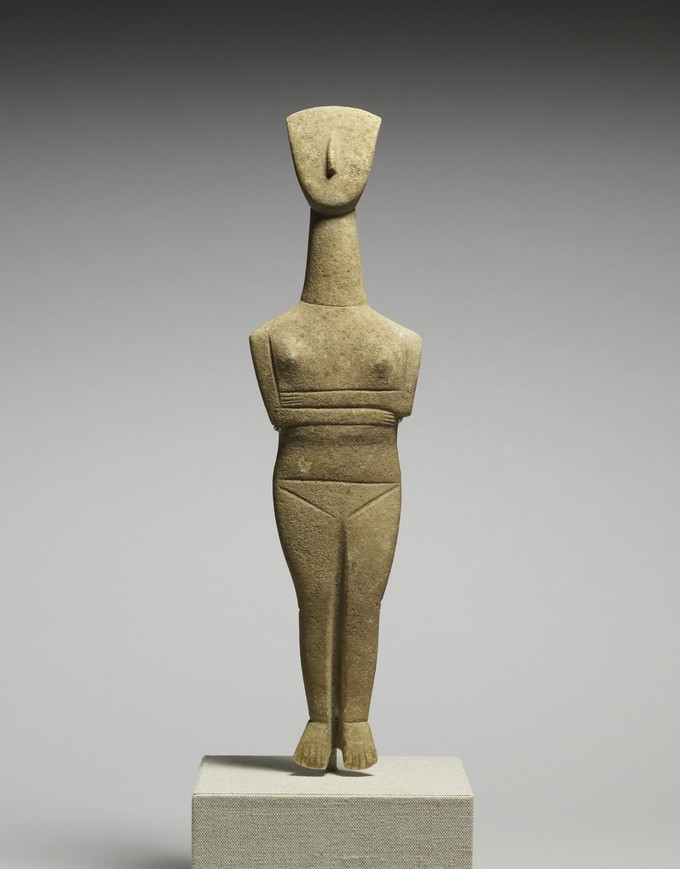
Cycladic Male Figures
Male figures are also found in Cycladic gravesites. These figures differ from the females, as the male typically sits on a chair and plays a musical instrument, such as the pipes or a harp. Harp players, like the one in the example below, play the frame harp, a Near Eastern ancestor of the modern harp.
The figures, their chairs, and instruments are all carved into elegant, cylindrical shapes. Like the female figures, the shape of the male figure is reliant on geometric shapes and flat planes. The incised lines provide details (such as toes) and paint added distinctive features to the now-blank faces.
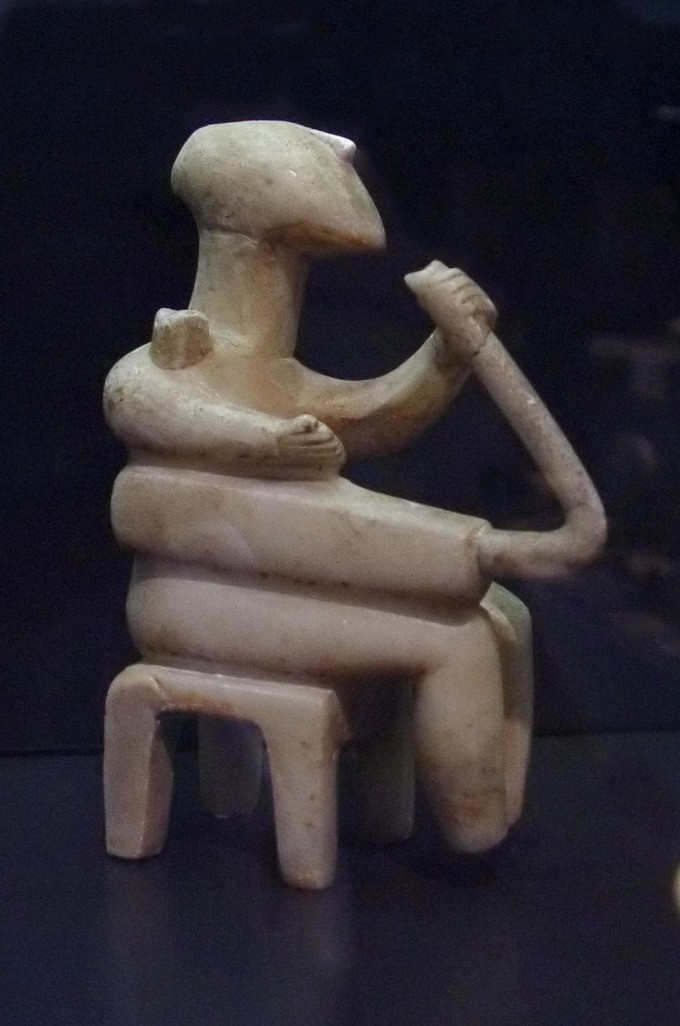
Other Cycladic Figures
While reclining female and seated male figurines are the most common Cycladic sculptures discovered, other forms were produced, such as animals and abstracted humanoid forms. Examples include the terra cotta figurines of bovine animals (possibly oxen or bulls) that date to 2200–2000 BCE, and small, flat sculptures that resemble female figures shaped like violins; these date to the Grotta–Pelos culture, also known as Early Cycladic I (c. 3300–2700 BCE). Like other Cycladic sculptures discovered to date, the purposes of these figurines remain unknown.
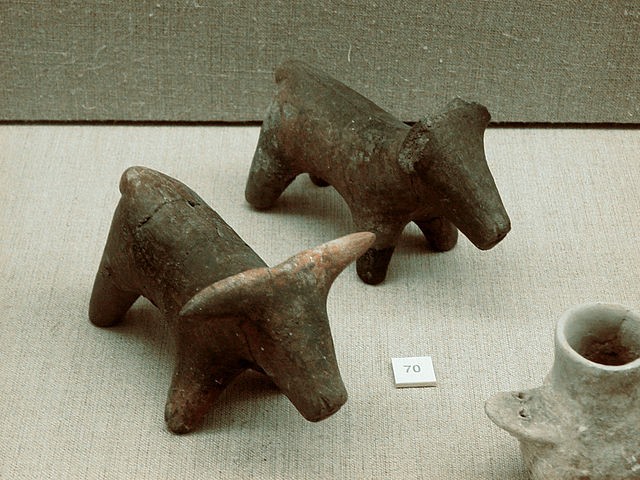
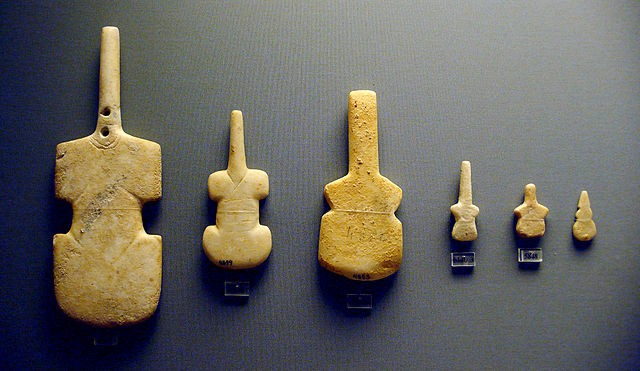
Summary
- The Cyclades are a chain of Greek islands in the middle of the Aegean Sea.
- Cycladic marble figurines of abstract male and female forms have been found at burial sites. These figurines are small, abstract, and rely on geometric shapes and flat plans for their design and would have been painted.
- The female figurines depict a woman with her legs together and arms folded over her abdomen, with her breasts and pubic region emphasized.
- The male figures are often depicted sitting in a chair and playing a harp or a lyre.
Adapted from “Boundless Art History” https://courses.lumenlearning.com/boundless-arthistory/chapter/the-aegean-bronze-age/ License: CC BY-SA: Attribution-ShareAlike
Of, or relating to the Cyclades. The Cyclades are a chain of Greek islands in the middle of the Aegean Sea. They encircle the island of Delos.

